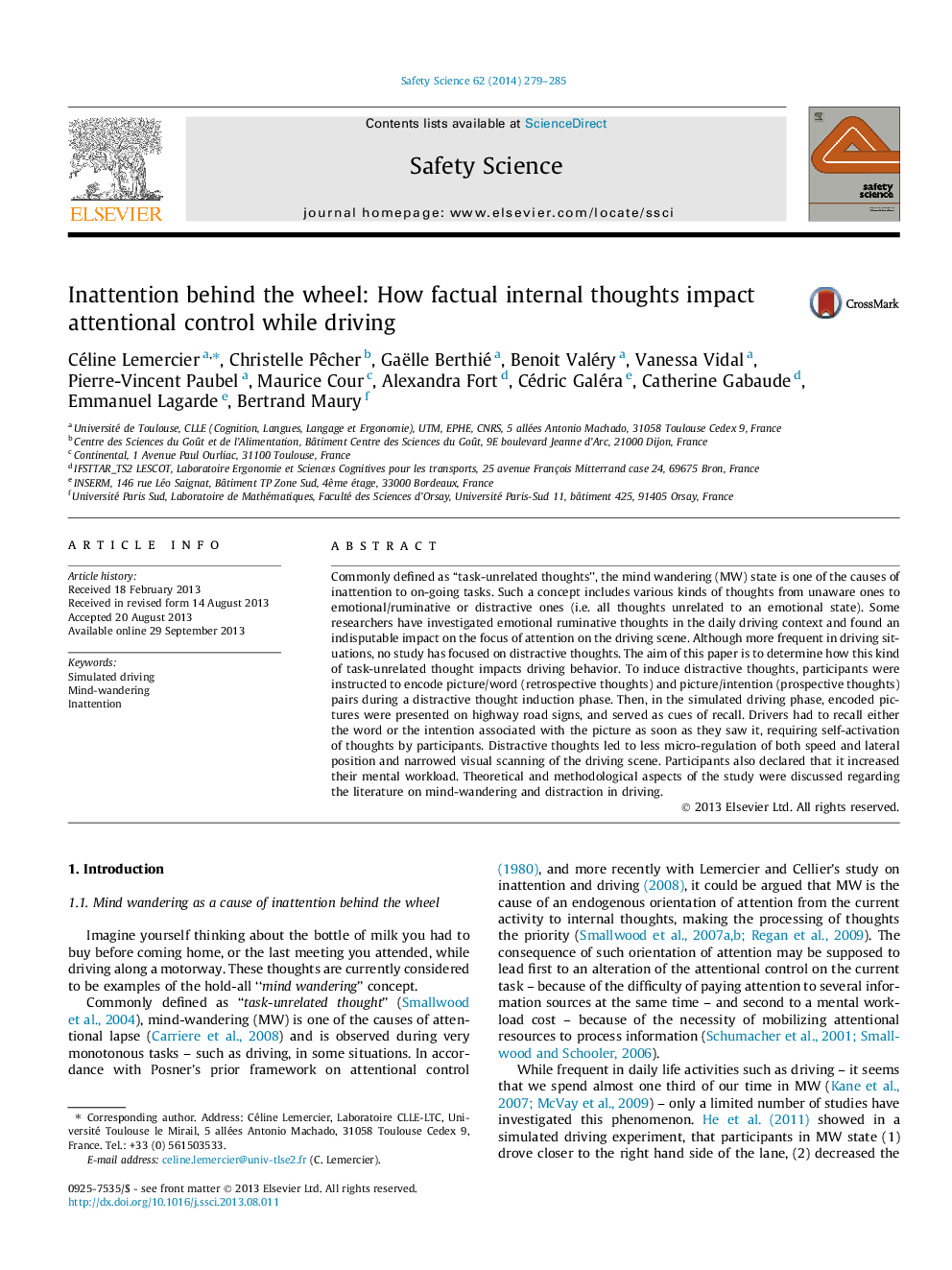| Article ID | Journal | Published Year | Pages | File Type |
|---|---|---|---|---|
| 589231 | Safety Science | 2014 | 7 Pages |
•We present a new experimental way to evaluate mind-wandering behind the wheel.•The experiment consisted in inducing distractive thoughts in drivers.•Mind-wandering state led to less micro-regulation of both speed and lateral position.•Mind-wandering altered visual scanning of the driving scene.
Commonly defined as “task-unrelated thoughts”, the mind wandering (MW) state is one of the causes of inattention to on-going tasks. Such a concept includes various kinds of thoughts from unaware ones to emotional/ruminative or distractive ones (i.e. all thoughts unrelated to an emotional state). Some researchers have investigated emotional ruminative thoughts in the daily driving context and found an indisputable impact on the focus of attention on the driving scene. Although more frequent in driving situations, no study has focused on distractive thoughts. The aim of this paper is to determine how this kind of task-unrelated thought impacts driving behavior. To induce distractive thoughts, participants were instructed to encode picture/word (retrospective thoughts) and picture/intention (prospective thoughts) pairs during a distractive thought induction phase. Then, in the simulated driving phase, encoded pictures were presented on highway road signs, and served as cues of recall. Drivers had to recall either the word or the intention associated with the picture as soon as they saw it, requiring self-activation of thoughts by participants. Distractive thoughts led to less micro-regulation of both speed and lateral position and narrowed visual scanning of the driving scene. Participants also declared that it increased their mental workload. Theoretical and methodological aspects of the study were discussed regarding the literature on mind-wandering and distraction in driving.
